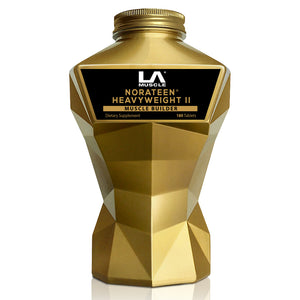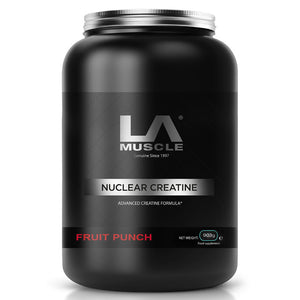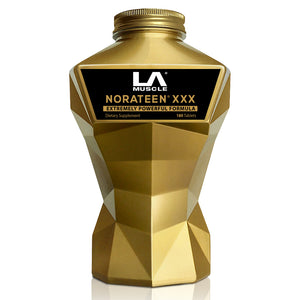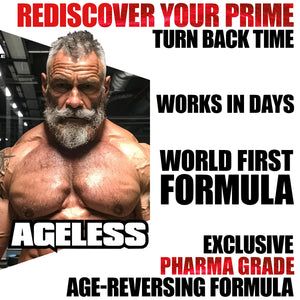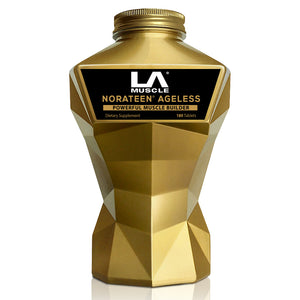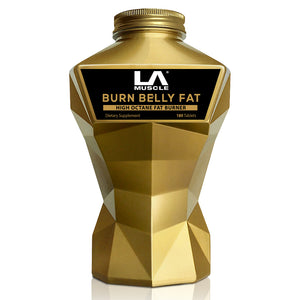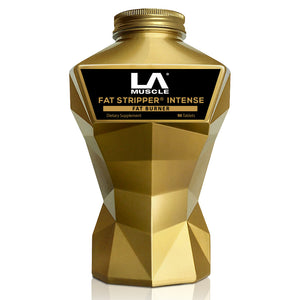
Moobs, also known as "man boobs" or gynecomastia, is a condition characterised by the enlargement of breast tissue in males. While it's not a life-threatening condition, it can cause emotional distress and negatively impact one's self-esteem. In this article, we will delve into what moobs are, how they develop, who is at risk, ways to prevent them, and provide 10 effective methods to get rid of them.
What Are Moobs (Man Boobs)?
Moobs, short for "man boobs," is a colloquial term used to describe the development of excess breast tissue in males. It can manifest as a mild puffiness around the nipple area or a more pronounced breast-like appearance. While it is often a benign condition, it can be emotionally challenging for those who experience it.
How Do Moobs Develop?
The development of moobs can be attributed to various factors, including hormonal imbalances, genetics, obesity, and certain medical conditions. Here's a closer look at the primary causes:
-
Hormonal Imbalances: Fluctuations in hormone levels, particularly an increase in estrogen (female hormone) relative to testosterone (male hormone), can lead to the development of breast tissue in males. This hormonal imbalance can occur during puberty, in middle-aged or older men, or due to medical conditions like hypogonadism or liver disease.
-
Genetics: Family history plays a significant role in the development of moobs. If your relatives have experienced gynecomastia, you may be more susceptible to it as well.
-
Obesity: Excess body fat can lead to the accumulation of fat cells in the chest area, giving the appearance of moobs. This is more commonly known as pseudogynecomastia and is related to being overweight or obese.
-
Medications and Substances: Certain medications, such as anabolic steroids, antiandrogens, and some antidepressants, can contribute to gynecomastia. Additionally, the use of recreational drugs like marijuana and excessive alcohol consumption may increase the risk.
-
Medical Conditions: Some medical conditions, including Klinefelter syndrome, hyperthyroidism, and testicular tumors, can lead to hormonal imbalances that result in moobs.
Who Is at Risk?
Gynecomastia can affect males of all ages, but certain groups are more at risk:
-
Adolescents: During puberty, hormonal fluctuations can cause temporary gynecomastia, which often resolves on its own within a few years.
-
Older Men: As men age, their testosterone levels tend to decrease, making them more susceptible to hormonal imbalances that may lead to moobs.
-
Men with Certain Medical Conditions: Individuals with conditions like hypogonadism, liver disease, and hyperthyroidism are more likely to develop gynecomastia.
-
Bodybuilders and Athletes: The use of anabolic steroids, which is common in bodybuilding and some sports, can lead to gynecomastia due to hormonal disruptions.
Prevention of Moobs:
While it may not be possible to prevent gynecomastia entirely, you can reduce your risk by adopting healthy lifestyle choices:
-
Maintain a Healthy Weight: Staying within a healthy weight range can help prevent pseudogynecomastia caused by excess body fat.
-
Limit Alcohol and Drug Use: Reducing or eliminating alcohol and recreational drug consumption can lower your risk of developing moobs.
-
Manage Medications: If you're taking medications that could potentially cause gynecomastia, discuss alternative treatments with your healthcare provider.
-
Address Hormonal Imbalances: Seek medical advice if you suspect hormonal imbalances are contributing to your condition. Hormone replacement therapy or other treatments may be recommended.
-
Exercise Regularly: Engage in a balanced exercise routine that includes both cardio and strength training to maintain hormonal balance and reduce body fat.
10 Effective Ways to Get Rid of Moobs:
If you're already dealing with moobs, there are several approaches to address the issue:
-
Consult a Healthcare Provider: Start by consulting a doctor or endocrinologist to determine the underlying cause of your gynecomastia and discuss appropriate treatment options.
-
Weight Loss: If pseudogynecomastia is the primary concern, losing excess body fat through a combination of diet and exercise can help reduce chest fat.
-
Hormone Therapy: In cases of hormonal imbalance, hormone replacement therapy (HRT) or medication may be prescribed to restore hormonal levels to normal.
-
Surgical Removal: For severe or persistent cases of gynecomastia, surgical procedures such as liposuction or mastectomy (breast tissue removal) can provide effective solutions.
-
Compression Garments: Wearing compression shirts or vests can temporarily minimize the appearance of moobs by flattening the chest area.
-
Dietary Changes: Reduce your intake of processed foods, sugary beverages, and high-fat meals, and focus on a balanced diet rich in fruits, vegetables, lean proteins, and whole grains.
-
Strength Training: Incorporate targeted chest exercises like push-ups, bench presses, and dumbbell flyes into your workout routine to build chest muscle and reduce breast tissue prominence.
-
Cardiovascular Exercise: Engage in regular cardio workouts, such as running, cycling, or swimming, to burn excess calories and reduce overall body fat.
-
Avoid Trigger Substances: If medications or substances are contributing to your gynecomastia, work with your healthcare provider to find alternatives or reduce their impact.
-
Psychological Support: Seek counseling or support groups to address any emotional distress or body image issues related to moobs. Building self-confidence can be just as important as physical treatment.
Moobs, or gynecomastia, is a common condition that can affect males of all ages. While it may not always be preventable, understanding the causes and risk factors can help you take proactive steps to reduce your risk. If you're already dealing with moobs, various treatment options are available, ranging from lifestyle changes to medical interventions. It's essential to consult with a healthcare provider to determine the most appropriate approach for your individual situation. Remember that seeking medical advice and support can help you achieve a more confident and healthy self-image.



